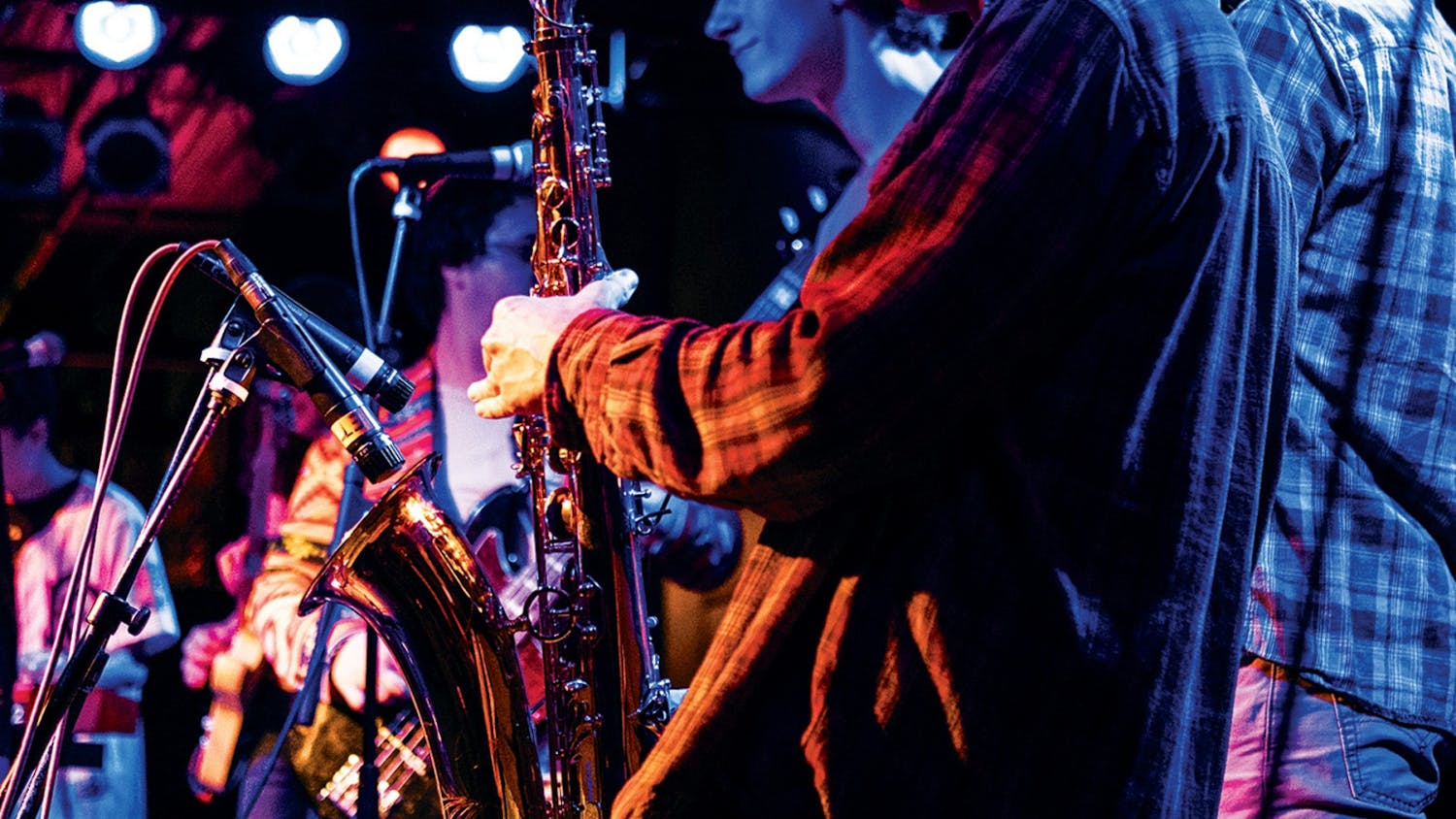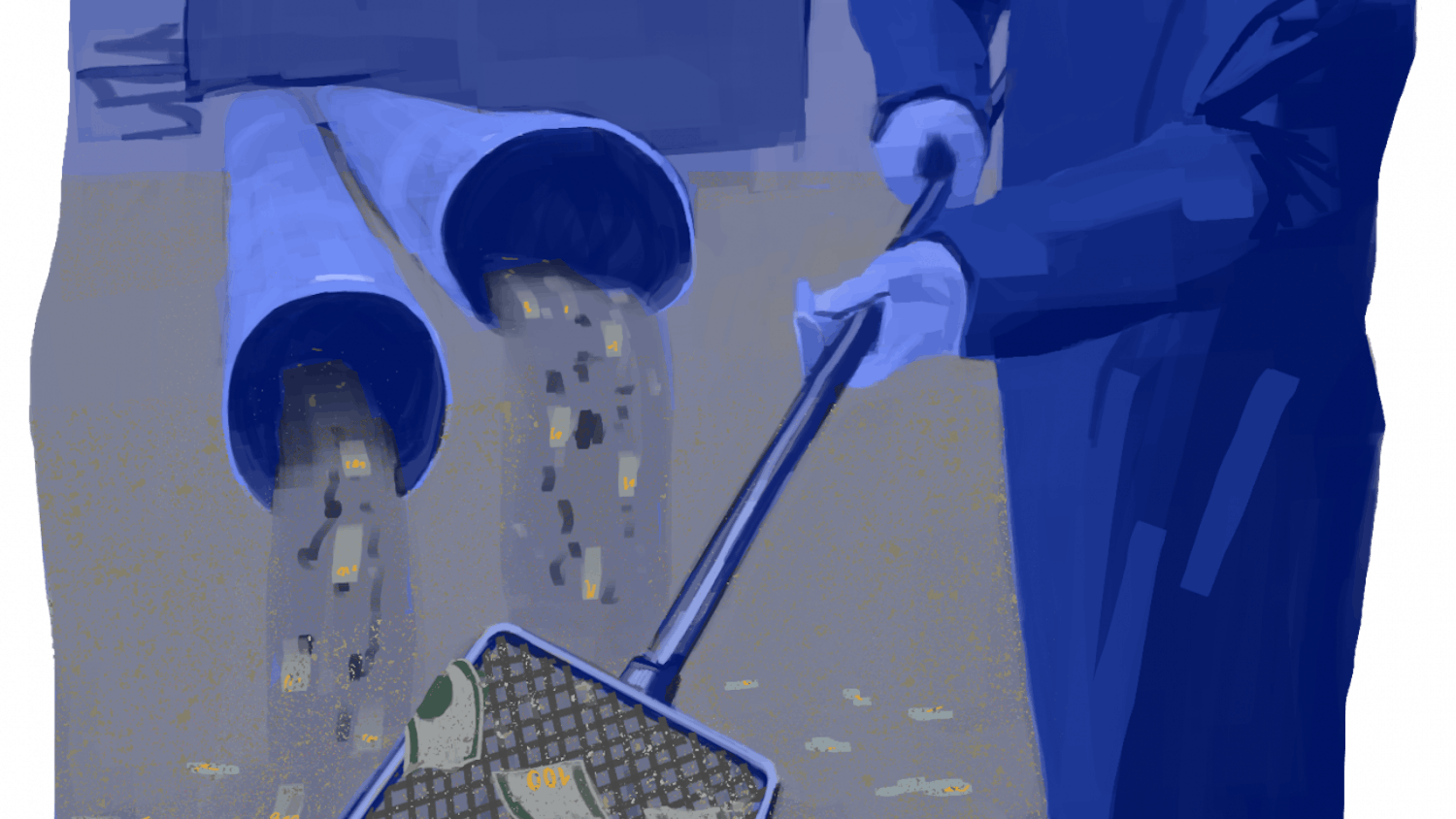Two large display windows look out onto Olneyville Square from a red brick building. It used to be a public library, but the building has since been transformed into Dirt Palace, a self-described "feminist art collective."
With the display's nondescript black backdrop and the glare on the case's glass, distracted passersby might walk past totally oblivious to the screen inside. The changing images on the screen zoom in — Google-Maps style — on Dirt Palace's location on the western side of Providence. The screen flashes images of people on a sidewalk, peering into a window. Some look quizzical, and others pose with friends, realizing that the camera is looking at them from behind the glass.
All these participants have placed their hands inside the white outline of a hand, triggering a sensor behind the glass. The camera flashes, and a few seconds later they are on the screen — and a new part of Dirt Palace's most recent art installment in its Storefront Window Gallery.
Dirt Palace's seven members each have studio space in the building for their artwork, a range of media that includes printmaking, film, lace making, writing, puppetry and painting. Each month they select an artist, usually local, to be featured in the gallery.
The window display has been active since the collective was founded in 2000. Dirt Palace looks for art they think will be relevant and fun for its Olneyville audience, said Li Pallas, who helps curate the display. Past displays include a constantly moving flying brain and a "fantasy world" that presents liberation as a theme.
"I mean, how is that not fun?" Pallas said.
Pallas said the collective seeks to bring "art into a community that might be otherwise disadvantaged." She has a "personal bent" for displays that inspire relationships and community, she said.
This month features the work of Sarah Bearse, a local installation artist.
Bearse adapted her installation from similar pieces she had previously displayed in Boston's city hall and a Harvard art gallery. While the camera in the Olneyville display responds to movement — a hand in front of the sensor — the camera in the city hall installation responded to noise at a certain volume, Pallas said. Loud voices triggered the camera, which then took a snapshot of the speaker and projected it onto the screen.
The installation "instantly made people feel so violated," Pallas said, that it was altered after 48 hours to no longer include the still shots.
Bearse's project was partly a reaction to a culture in which unprecedented amounts of personal information are made public on Web sites like Facebook and MySpace, Pallas said. The display toys with the concept of "playing with these public and private spaces," she said.
But the project is structured differently in Olneyville than in Boston, since many of the people getting their picture taken put themselves intentionally in front of the lens.
"It ends up showcasing our neighbors," Pallas said. "I feel like it's for the community here more than anyone else."




